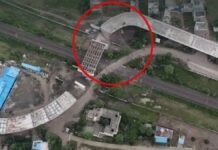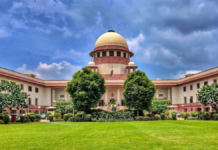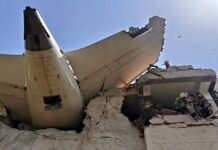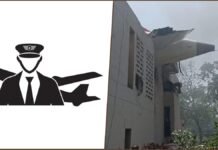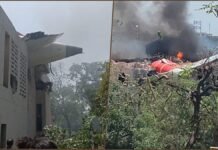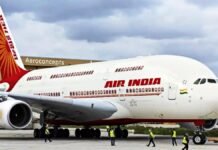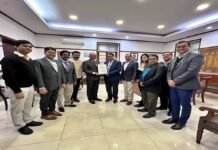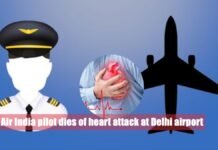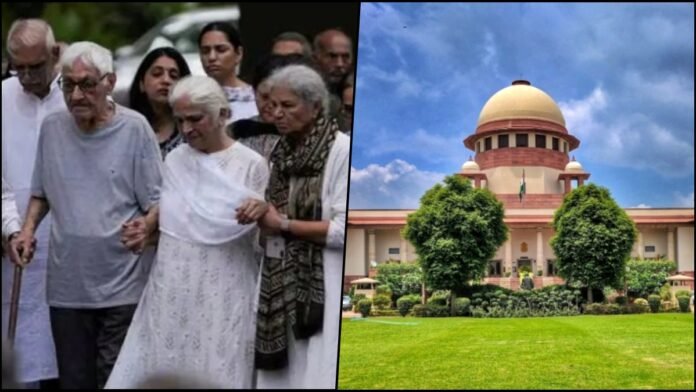
Key Points
- The Boeing 787-8 Dreamliner crashed on June 12, 2025, just 32 seconds after takeoff from Ahmedabad, killing all 241 people on board except one survivor, plus 19 on the ground.
- Pushkaraj Sabharwal, the 88-year-old father of pilot Captain Sumeet Sabharwal, approached the Supreme Court seeking a judicially monitored investigation.
- The preliminary report by the Aircraft Accidents Investigation Board (AAIB) released on July 12 blamed “human error” by the cockpit crew, triggering widespread criticism.
- The Supreme Court reassured the father that his son is not being blamed and that the preliminary investigation has not concluded pilot fault.
- Technical evidence shows the Ram Air Turbine (RAT) emergency generator deployed before the crash, indicating possible electrical or digital malfunction.
- The court issued notices to the central government and DGCA, with the next hearing scheduled for November 10, 2025.
New Delhi: Air India Flight 171, operating from Ahmedabad to London Gatwick on June 12, 2025, crashed into the hostel block of B.J. Medical College at 13:39 IST (08:09 UTC), just 32 seconds after takeoff from Sardar Vallabhbhai Patel International Airport. The Boeing 787-8 Dreamliner, carrying 230 passengers and 12 crew members, lost altitude rapidly and struck buildings 1.7 kilometers from the runway. Of the 242 people aboard, 241 died in the crash; only one passenger miraculously survived. An additional 19 people on the ground were killed, and 67 others suffered serious injuries, bringing the total death toll to 260. This marked the first fatal accident involving a Boeing 787 since the aircraft entered service in 2011 and became the deadliest plane crash of the 2020s.
The aircraft struck the college hostel with its tail section, causing the empennage to detach before the fuselage and wings collided with the mess hall, where medical students were having lunch. Post-crash fires reached temperatures estimated at 1,500°C (2,700°F), greatly complicating victim identification, though DNA analysis eventually identified all 260 victims by June 28. Among the casualties was Vijay Rupani, Gujarat’s Chief Minister from 2016 to 2021.
Father’s Emotional Plea to the Supreme Court
On Friday, November 7, Pushkaraj Sabharwal, the 88-year-old father of Captain Sumeet Sabharwal, who served as Pilot-in-Command, appeared before the Supreme Court demanding an impartial investigation. His petition, filed jointly with the Federation of Indian Pilots (FIP), seeks the constitution of a judicially monitored probe panel, arguing that the current investigation is deliberately shifting blame onto the pilots while ignoring critical technical malfunctions. “Unfortunately, this crash took place, but you should not carry this burden on yourself that your son is being blamed. Nobody can blame him for anything. No one in India believes it is the pilot’s fault,” the court told the grieving father.
The bench also dismissed foreign media reports suggesting pilot error as inaccurate and premature. The court issued notices to the central government, the Directorate General of Civil Aviation (DGCA), and other parties, seeking their responses to the petition. This marks the second time the Supreme Court has intervened in the investigation. On September 22, the court expressed displeasure over leaked portions of the investigation report highlighting alleged pilot fault, stating that confidentiality must be maintained until the investigation is complete.
Controversial Preliminary Report
The preliminary report released on July 12 by the Aircraft Accidents Investigation Board (AAIB) attributed the crash to “human error” on the part of the cockpit crew, a conclusion that immediately drew fierce criticism from pilot bodies and victims’ families. The report allegedly cited a cockpit voice recorder conversation in which Captain Sumeet Sabharwal was heard asking his co-pilot Clive Kunder, “Why did you cut off the fuel?” to which Kunder replied, “I didn’t”. However, petitioners have challenged the report’s credibility, pointing to what they describe as “perversity and critical inconsistencies” that demonstrate bias and technical incompleteness.
Technical Evidence Contradicts Human Error Theory
The most significant technical evidence contradicting the human error conclusion is the deployment of the Ram Air Turbine (RAT), an emergency generator that automatically activates during electrical or power system failures. “The deployment of the emergency generator, the Ram Air Turbine (RAT), before the crash is a direct indicator of an electrical or digital malfunction and contradicts the report’s inference that pilot actions initiated power loss,” the petitioners argued. The investigation has failed to provide a time-stamped correlation between RAT deployment and crew inputs, they noted, raising concerns about whether the pilots’ actions were responses to system failures rather than the cause.
Petitioners further criticized the investigation for ignoring the possibility that faults in the Common Core System (CCS), which integrates avionics, flight controls, power distribution, and software, may have triggered the sequence of failures. “The omission of this line of inquiry demonstrates bias and technical incompleteness,” they charged, adding that “to treat this as a deliberate pilot error, without first excluding electronic malfunction, is procedurally unjust and logically unsound. It reverses causation, blaming the pilots for what could be a symptom of system failure rather than its trigger”.
Flight data analysis revealed that the Boeing 787 could not maintain lift after takeoff and was unable to climb beyond 625 feet in altitude. Video simulations showed the aircraft’s landing gear remained deployed during the brief flight, with wing flaps in an unusual configuration.
Regulatory Response and Airline Impact
Following the crash, India’s Directorate General of Civil Aviation (DGCA) ordered additional pre-departure technical inspections for Air India’s entire Boeing 787 fleet starting June 15. The DGCA also mandated extensive maintenance checks on fuel-parameter monitoring systems, cabin air compressor systems, electronic engine control systems, engine fuel-driven actuators, and oil-system checks for all Boeing 787-8 and 787-9 aircraft in Air India’s fleet. In response, Air India suspended 83 wide-body flights for six weeks to perform government-mandated safety checks, gradually restoring routes in mid-July with full recovery planned by October 2025.
The Tata Group, which acquired Air India in 2022, announced compensation of 1 crore Indian rupees (approximately $115,000) to families of each victim, both aboard the aircraft and on the ground, with final payouts to be governed by international convention and Indian law. Air India deployed over 400 caregivers to assist family members in Ahmedabad, assigning at least one caregiver to every affected family.
Path Forward
The Supreme Court will hear Pushkaraj Sabharwal’s petition along with another pending petition on November 10, 2025. The court’s strong reassurance to the pilot’s father signals judicial scrutiny of an investigation that pilot organizations believe has prematurely concluded human error without adequately exploring technical system failures. As the nation awaits the final investigation report, the question remains whether the crash resulted from pilot actions, catastrophic system failure in the Boeing 787’s complex integrated systems, or a combination of factors that the preliminary investigation failed to fully explore.

















